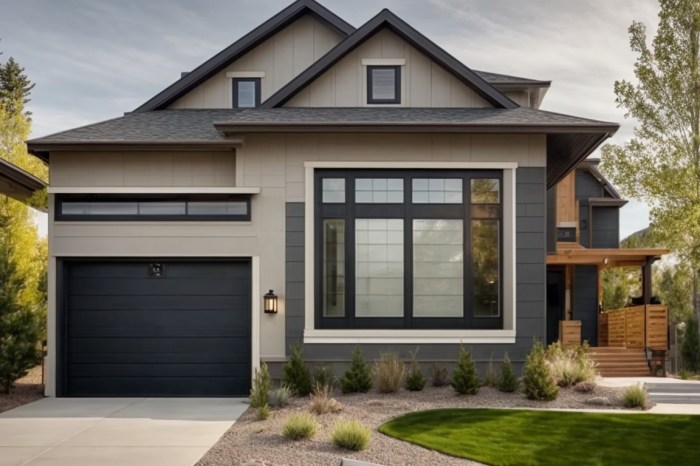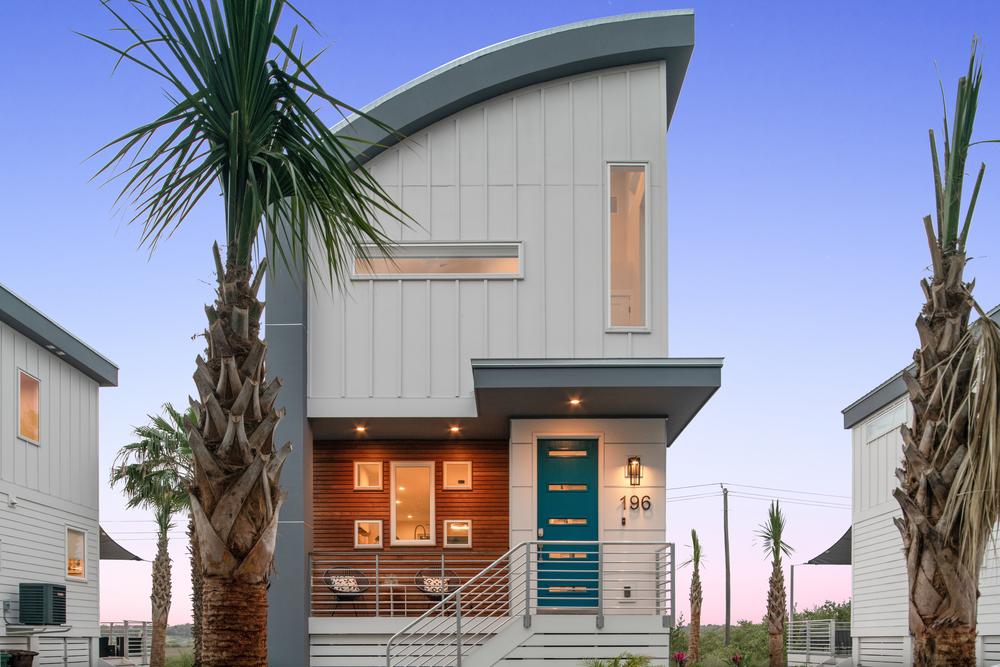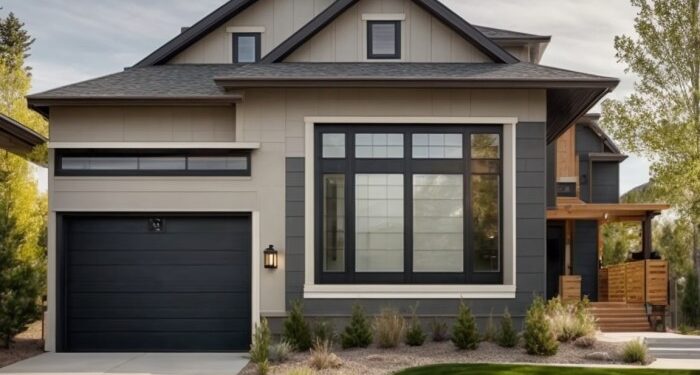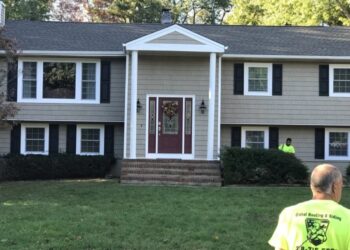Embark on a journey to explore the world of Climate-Resistant Siding Solutions for Coastal Homes, where challenges meet innovation and durability intertwines with style. Dive into this guide filled with insights and practical advice.
Delve into the realm of siding materials, installation considerations, and design options that elevate coastal homes to new heights of resilience and beauty.
Climate-Resistant Siding Solutions for Coastal Homes

Coastal homes face unique challenges when it comes to siding durability due to exposure to harsh weather conditions such as saltwater, high winds, and humidity. These factors can lead to faster deterioration of siding materials compared to homes in other locations.
Common Siding Materials Used in Coastal Regions
- Vinyl Siding: Vinyl is a popular choice for coastal homes due to its durability, low maintenance, and resistance to moisture.
- Fiber Cement Siding: Fiber cement siding is known for its strength, resistance to rot and insects, and ability to withstand coastal weather conditions.
- Cedar Siding: Cedar siding is naturally resistant to decay and insects, making it a good option for coastal homes.
Importance of Selecting Climate-Resistant Siding Solutions
Choosing climate-resistant siding solutions is crucial for coastal homes to ensure longevity and protection against the elements. By selecting materials specifically designed to withstand coastal weather conditions, homeowners can avoid frequent repairs and maintenance costs.
Benefits of Climate-Resistant Siding for Coastal Homes
- Longevity: Climate-resistant siding materials are designed to last longer in coastal environments, reducing the need for frequent replacements.
- Protection: These siding solutions offer better protection against moisture, saltwater, and high winds, helping to preserve the structural integrity of the home.
- Low Maintenance: Climate-resistant siding requires less maintenance over time, saving homeowners time and money on upkeep.
Types of Climate-Resistant Siding
When it comes to choosing the right siding material for coastal homes, it is crucial to consider the climate-resistance of the material. Here, we will explore different types of climate-resistant siding materials, comparing the durability and maintenance requirements of vinyl, fiber cement, and engineered wood siding.
Vinyl Siding
Vinyl siding is a popular choice for coastal homes due to its durability and low maintenance requirements. It is resistant to moisture, salt, and strong winds, making it ideal for withstanding the harsh coastal climate. Additionally, vinyl siding does not require painting and can be easily cleaned with a hose and mild detergent.
However, it may fade over time and can crack or warp in extreme weather conditions.
Fiber Cement Siding
Fiber cement siding is known for its exceptional durability and resistance to rot, fire, insects, and moisture. It can withstand high winds and is non-combustible, making it a suitable choice for coastal areas prone to hurricanes and extreme weather. Fiber cement siding requires minimal maintenance, with occasional painting to refresh its appearance.
While it is more expensive than vinyl siding, its longevity and durability make it a cost-effective option in the long run.
Engineered Wood Siding
Engineered wood siding combines wood fibers and resin to create a durable and weather-resistant material. It offers the natural look of wood with enhanced durability and resistance to rot, insects, and moisture. Engineered wood siding requires regular maintenance, including painting or staining every few years to protect it from the elements.
While it may not be as maintenance-free as vinyl siding, it provides a balance between aesthetics and durability for coastal homes.
Installation Considerations

When it comes to installing climate-resistant siding for coastal homes, there are several key factors to consider to ensure the longevity and effectiveness of the siding. Proper installation is crucial in protecting the home from the harsh coastal elements such as saltwater, high winds, and humidity.
Preparation and Planning
Before beginning the installation process, it is essential to thoroughly inspect the existing exterior of the home. Any damage or decay should be addressed and repaired before installing the new siding. Additionally, proper planning is crucial to ensure that the siding is installed correctly and efficiently.
- Ensure the proper materials are selected based on the specific climate conditions of the coastal area.
- Check for any building codes or regulations that may affect the installation process.
- Consider the layout and design of the home to determine the best siding placement for optimal protection.
Specialized Installation Techniques
The installation process for climate-resistant siding in coastal homes may require specialized techniques to enhance durability and weather resistance. Some of these techniques include:
- Using corrosion-resistant fasteners to prevent rust and deterioration in saltwater environments.
- Applying additional sealants or weatherproofing measures to protect against moisture infiltration.
- Properly flashing and sealing joints and seams to prevent water penetration.
Role of Professionals
While some homeowners may choose to install siding themselves, hiring professionals with experience in installing climate-resistant siding is highly recommended. Professional installers have the expertise and tools necessary to ensure the siding is installed correctly and effectively.
- Professionals can provide guidance on the best siding materials for the specific coastal climate.
- Experienced installers can complete the installation more efficiently, saving time and preventing potential issues.
- Professional installation often comes with warranties and guarantees, providing peace of mind for homeowners.
Design and Aesthetics
When it comes to climate-resistant siding solutions for coastal homes, the design and aesthetics play a crucial role in enhancing the overall appeal of the property. The right siding choice can not only protect your home from harsh weather conditions but also elevate its curb appeal.
Design Options
There are a variety of design options available with climate-resistant siding solutions, ranging from traditional to modern styles. Whether you prefer a classic look or a more contemporary design, you can find siding options that suit your taste and complement the coastal environment.
Siding Choices for Curb Appeal
Choosing the right siding can significantly enhance the curb appeal of coastal homes. Opting for siding materials that mimic the look of wood, stone, or other natural elements can add a touch of elegance and charm to your property. Additionally, selecting siding with unique textures and finishes can create visual interest and make your home stand out in the neighborhood.
Selecting Colors and Textures
When selecting siding colors and textures for coastal homes, it's essential to consider the surrounding environment. Lighter colors can reflect heat and sunlight, helping to keep your home cool in warmer climates, while darker shades can create a cozy and inviting atmosphere.
Textures such as shingles, shakes, or board and batten can add depth and character to your home's exterior.
Final Summary
As we conclude our exploration of Climate-Resistant Siding Solutions for Coastal Homes, remember that the right siding choice can transform not just the exterior of your home, but also its ability to withstand nature's elements. Make an informed decision and watch your coastal abode thrive for years to come.
Questions and Answers
What are the key challenges coastal homes face in terms of siding durability?
Coastal homes often battle with issues like saltwater exposure, high winds, and humidity, which can accelerate siding deterioration.
How do vinyl, fiber cement, and engineered wood siding materials compare in terms of durability?
Vinyl siding is known for its low maintenance but may not withstand extreme weather conditions as well as fiber cement or engineered wood, which offer better durability.
What factors should be considered during the installation of climate-resistant siding?
Proper sealing, fastening, and ensuring adequate ventilation are crucial factors to consider during the installation of climate-resistant siding.














